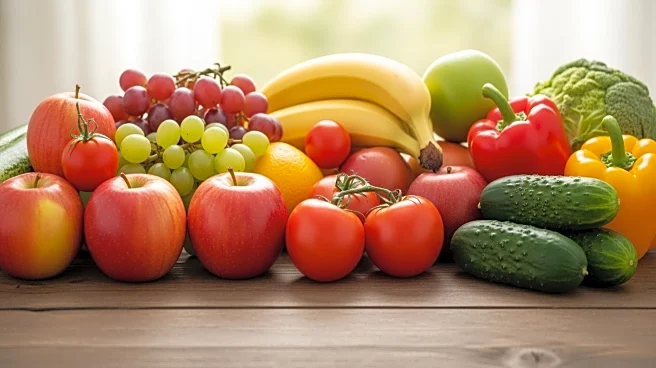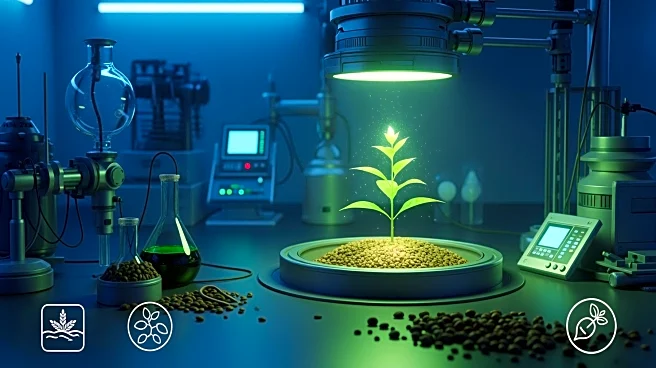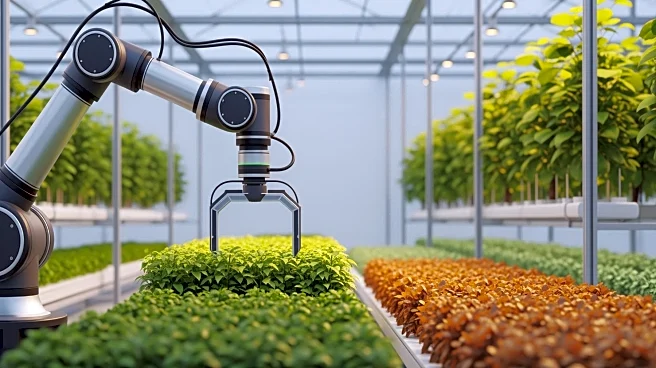What's Happening?
Greenhouses, traditionally used for vegetables like tomatoes, peppers, and cucumbers, are now being utilized for tropical fruit cultivation, including avocados, in the Mediterranean region. This shift
began with mangoes and has recently expanded to avocados, particularly the Lamb Hass variety, which is compact and suitable for greenhouse environments. The initiative has proven successful, with yields matching or surpassing traditional crops, offering profitability and less labor-intensive farming. The use of greenhouses allows for earlier harvesting and improved fruit quality through controlled temperature and cross-pollination. The choice of greenhouse structure varies by location, with shading netting preferred in coastal areas and plastic in colder inland regions.
Why It's Important?
The introduction of avocados in greenhouses represents a significant advancement in agricultural practices, potentially transforming the industry by enabling cultivation in regions previously unsuitable due to climate constraints. This innovation could lead to increased profitability for growers, as avocados are a high-demand crop with favorable market prices. The ability to control environmental factors within greenhouses can result in higher quality produce, which is crucial for maintaining competitive advantage in the market. Additionally, this method of cultivation could reduce dependency on traditional farming methods, offering a sustainable alternative that maximizes land use efficiency.
What's Next?
As greenhouse avocado cultivation gains traction, it is likely to expand further across the Mediterranean and potentially into other regions with similar climate challenges. Growers may continue to experiment with different tropical fruits, leveraging the benefits of greenhouse technology. The success of this approach could prompt further investment in greenhouse infrastructure and research into optimizing conditions for various crops. Stakeholders, including agricultural businesses and policymakers, may explore incentives to support this innovative farming method, recognizing its potential to boost local economies and food security.
Beyond the Headlines
The shift towards greenhouse cultivation of avocados highlights broader trends in agriculture, such as the move towards sustainable and efficient farming practices. This development may encourage further exploration of semi-hydroponic systems and precise fertigation techniques, which can enhance productivity while minimizing environmental impact. Additionally, the focus on water quality and management underscores the importance of resource conservation in agriculture, particularly for crops sensitive to salinity. As climate change continues to affect traditional farming, greenhouse technology could play a pivotal role in adapting agricultural practices to new environmental realities.











